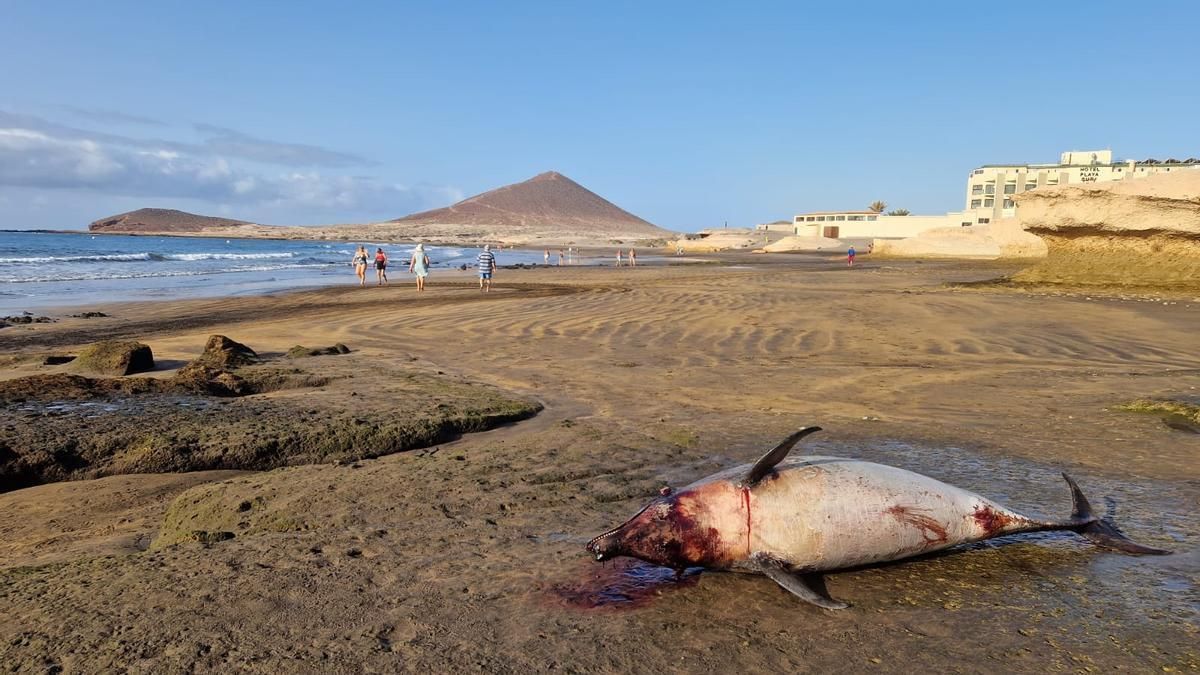On May 21, the body of a female sperm whale 9.8 meters and 8.4 tons was found on the coast of Fasnia, southeast of Tenerife. According to preliminary results of the necropsy, conducted by the University Institute of Animal Health and Food Safety (IUSA) of the University of Las Palmas de Gran Canaria (ULPGC), the cause of death was a severe cranial injury, caused by a clean cut over two meters long on the animal’s head.
Forensic data point to a collision as the possible origin of the impact, which would have caused an almost immediate death.
Forensic analysis: a quick and violent death
The necropsy was performed at the facilities of PIRS (Granadilla Industrial Park), with the collaboration of the Environmental Service of the Tenerife Island Council and the Canary Islands Stranding Network (Red Vigía) of the regional government. The procedure lasted more than six hours and was carried out by 13 specialists, including veterinary pathologists, imaging technicians, and those responsible for the biological study of stranded cetaceans.
During the analysis, a sagittal cut in the head affecting the melon —a key structure in cetaceans’ echolocation— was detected, completely fracturing the rear part of the jaw. The tissues had cellular reactions compatible with an intravital trauma, i.e., produced while the animal was still alive.
The specimen, a young adult female in good bodily condition, had been dead for 24 to 36 hours at the time of examination. Additionally, it showed signs of scavenging in the mouth and tongue, likely due to the action of other animals or the process of body handling after the discovery.
Another sperm whale and several cetaceans found in a few days
On the same day the first specimen was located, another sperm whale was spotted floating in the same area, although it could not be recovered. Eight days later, remains in an advanced state of decomposition were found, which could correspond to this second animal. Due to its deterioration, a complete necropsy was not possible, although genetic analyses have been initiated to confirm its identity and possible relationship to the first specimen.

File image of the carcass of a dolphin found in Médano. / ED
In the last ten days, there have been seven cases of stranded cetaceans in the archipelago’s waters, including sperm whales, a beaked whale, a pygmy sperm whale, a pilot whale, and a dolphin. So far, the causes of death of these other animals point to natural origins, according to experts.
Collision or natural cause? The importance of not jumping to conclusions
The IUSA insists on the need to conduct complete necropsies to precisely determine the cause of death. They note that the presence of blood or external wounds does not necessarily imply a collision with a vessel, as processes such as predation, scavenging, or subsequent manipulation can generate similar signs.
It is also emphasized that not all traumas are caused by propellers, requiring rigorous forensic analysis to avoid speculation.
Call for coordinated action
The report highlights the need to act calmly and professionally in these episodes. Various public and private entities have urged boosting surveillance and improving coordination to mitigate the effects of these deaths on marine biodiversity.
Experts call for a synergistic and sustained response that advances the knowledge and protection of cetaceans in the archipelago’s waters, a region considered strategic for the conservation of marine mammals in the Atlantic.
















